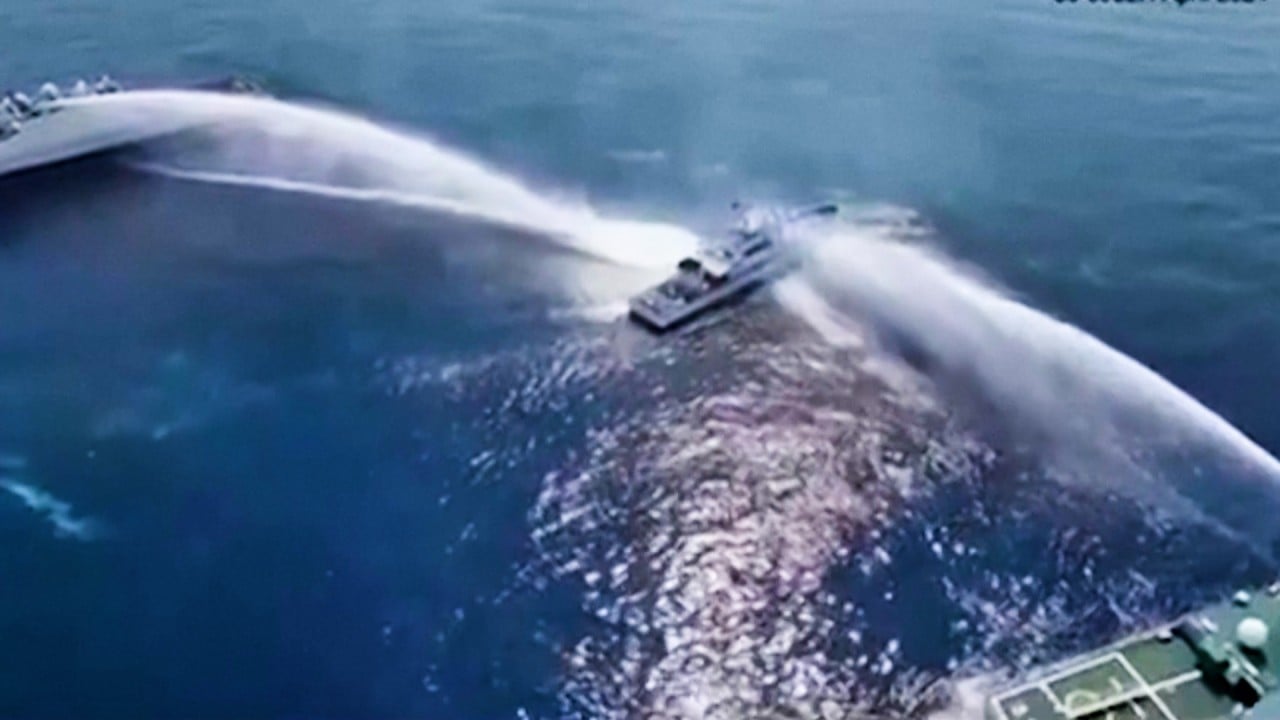South China Sea: giant ship sent near disputed shoals to show ability to ‘outlast Manila’
However, he said neither side was expected to provoke further conflict after a string of confrontations over the past year.
According to Collin Koh, a senior fellow at the S. Rajaratnam School of International Studies in Singapore, the deployment of the vessel aimed to demonstrate Beijing’s ability to “outlast Manila” in the long-running dispute, “by showing it has more of these much larger vessels”.
The Huaxun 09’s patrol followed close on the heels of the latest confrontation with the Philippines involving the world’s largest coastguard vessel near the Sabina Shoal.
The 12,000-tonne CCG-5901 was sent to patrol the seas near the Sabina Shoal where the Philippine BRP Teresa Magbanua was also active.
The Philippines said it would not move its vessel despite intimidation from the Chinese “monster ship”, which is around five times its size.
The 165-metre (541 feet) Haixun 09 is equipped with water cannons, an aerial tracking system, medical rescue capabilities and a helicopter landing deck, according to official data.
But, unlike the CCG-5901, it is not part of the China Coast Guard (CCG), a quasi-military force often referred to as “China’s second navy”.
The Haixun 09 was commissioned in 2021 by the China Maritime Safety Administration (MSA) of the southern province of Guangdong. Its publicly acknowledged patrols have hitherto been largely limited to waters off the southern provinces, including Guangdong, Guangxi and Hainan.
“The MSA usually doesn’t conduct sovereignty assertion patrols with such regularity as the CCG, which remains the workhorse in this effort,” Koh said.
He said that the force only has one other vessel on a par with the CCG-5901 and because “they are also expensive to build, operate, and maintain, it is not feasible to rely on this limited force”.
Koh also said this type of muscle-flexing would continue but neither side intended to scale up the confrontation.
“There’s not likely going to be an escalation though, but we can expect this face-off between the rival maritime forces to persist for quite a while. Ultimately, none of the concerned parties at present – China, the Philippines, and the US – is interested in provoking conflict.”
The United States last month reiterated its “ironclad” commitment to the Philippines under a 1951 mutual defence treaty citing “China’s dangerous and escalatory actions”.
But despite months of confrontations, China and the Philippines earlier this month agreed to keep talking to ease maritime tensions.
Song Zhongping, a former PLA instructor, expects Beijing to build even more powerful ships to continue South China Sea patrol missions.
“The construction tonnage of China’s maritime patrol vessels is getting bigger and bigger because China’s maritime territory is very large and the entire South China Sea is a big span, so these large maritime patrol vessels are increasing their tonnage to enhance the control capability of maritime territory in the South China Sea,” he said.
“Previously, China’s ability to control the sea was weak. That’s why a large number of islands and reefs have been occupied by other countries and regions, so our ability to manage and control the sea should be improved.”
Beijing claims almost the whole of the South China Sea under what it calls its “historic nine-dash line”, claims contested by Vietnam, Malaysia and Brunei as well as the Philippines.
